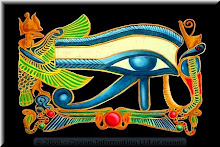The story of Beowulf, gives many insights to Anglo-Saxon values. The world in which Beowulf lived in was very patriarchal. When describing a queen, the author doesn't even mention her name and then describes her merit as being a "balm in bed to the battle-scarred Swede" (Haney 61-63). The idea that a woman's place is in bed, shows the feeling that men were superior. Another value shown in Beowulf is the importance of the Christian god. The author says "But blessed is he who after death can approach the Lord and find friendship in the father's embrace" (Haney 186-188). The author was Christian so it's possible that many others at that time felt the same way. The people of this time gave a lot of glory to war. Often warriors were judged by their armor. When Hrothgar's men see the host with Beowulf they inquire about their armour. "Where do you come from, carrying these decorated shields and shirts of mail, these cheek-hinged helmets and javelins? (Haney 334-336). The men notice that the armour is fancy and want to know if the warriors are special just because of their armour.
Alliteration is commonly used throughout Beowulf. A good example of alliteration is the quotes "as captain , a canny pilot along coasts and currents" (Haney 208-209). The repetition of sound is a good way of stressing a point in the story. Another example is "The ship rode the water, broad-beamed, bound by it's hawser" (Haney 301-302). The repetition of the sound "b" is pleasing to the ear. Another example is "Their man-shirts glinted, hard and hand-linked; the high-gloss iron" (Haney 321-322). The sound makes the words seem stronger, stressing the subject as being armour.
Kennings are used in many spoken stories including Beowulf. Instead of just saying the "sea" the author says "whale-road" (Haney 10). The use of this kenning describes another way of looking at the sea. This phrase says that the sea is a way of travel, like a road. The author descries "fog" as "cloud-murk" (Haney 651). This adds the adjective murky without actually saying the murky fog. When describing muscles or tendons the author says "bone-lappings" (Haney 817). This description is much more gruesome and adds to the feeling of carnage and gore.
Alliteration is commonly used throughout Beowulf. A good example of alliteration is the quotes "as captain , a canny pilot along coasts and currents" (Haney 208-209). The repetition of sound is a good way of stressing a point in the story. Another example is "The ship rode the water, broad-beamed, bound by it's hawser" (Haney 301-302). The repetition of the sound "b" is pleasing to the ear. Another example is "Their man-shirts glinted, hard and hand-linked; the high-gloss iron" (Haney 321-322). The sound makes the words seem stronger, stressing the subject as being armour.
Kennings are used in many spoken stories including Beowulf. Instead of just saying the "sea" the author says "whale-road" (Haney 10). The use of this kenning describes another way of looking at the sea. This phrase says that the sea is a way of travel, like a road. The author descries "fog" as "cloud-murk" (Haney 651). This adds the adjective murky without actually saying the murky fog. When describing muscles or tendons the author says "bone-lappings" (Haney 817). This description is much more gruesome and adds to the feeling of carnage and gore.

No comments:
Post a Comment